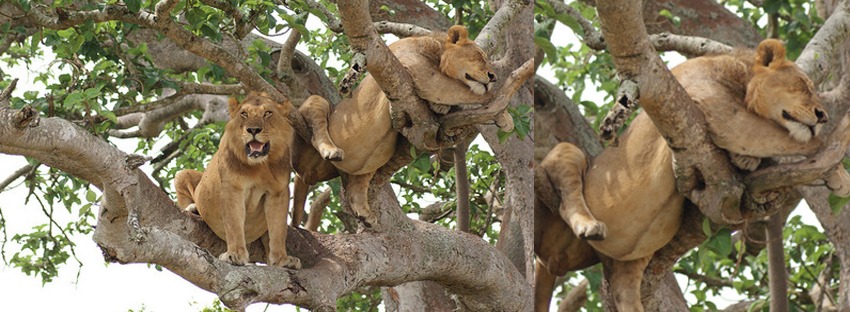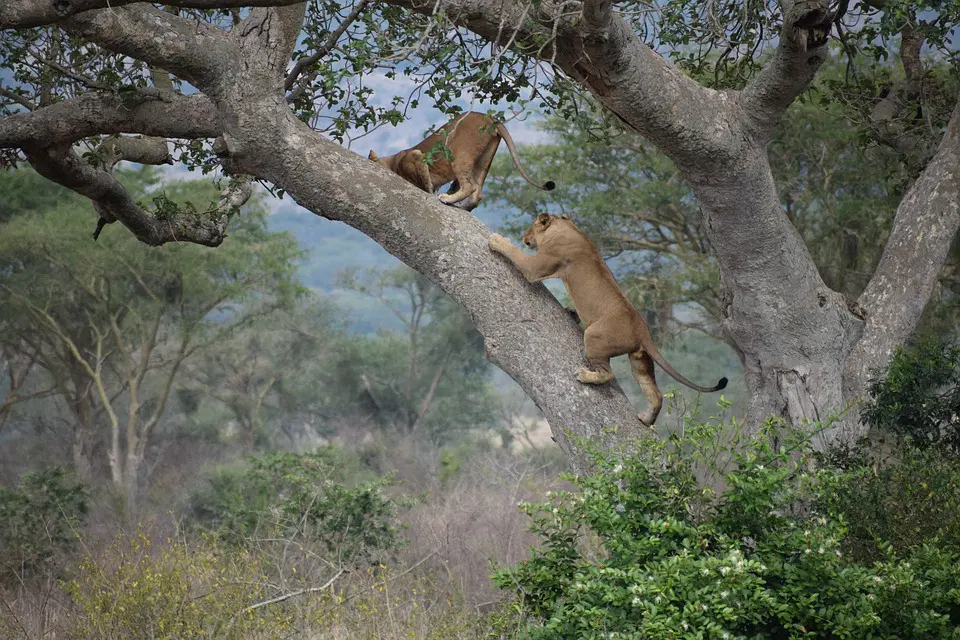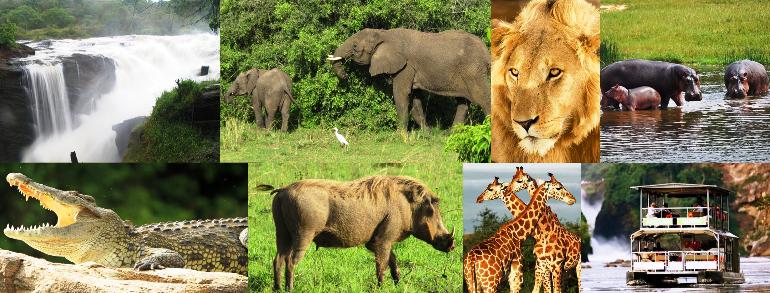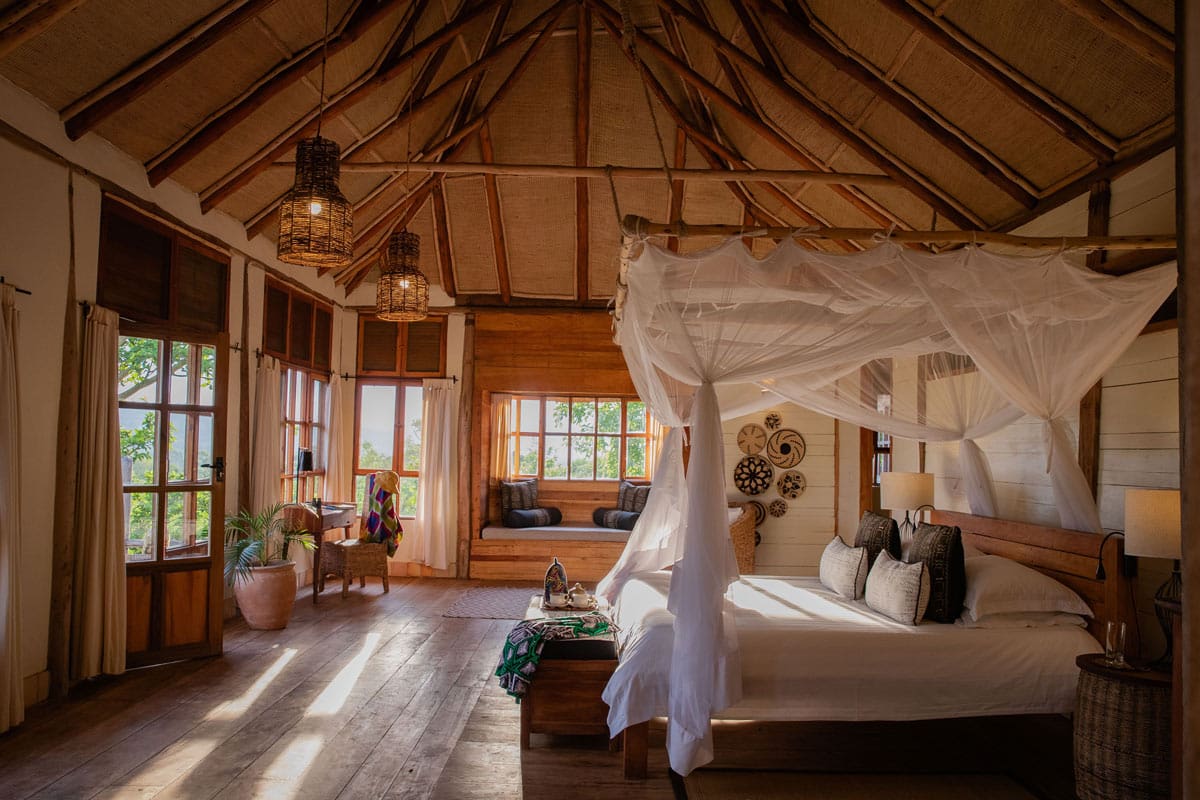
Tree Climbing Lions in Ishasha Sector
Tree Climbing Lions in Ishasha Sector.
Tree Climbing Lions in Ishasha Sector : The southern portion of the ishasha sector of Queen Elizabeth National Park is home to tree-climbing lions. Rarely do lions climb trees as a habit. Lions that climb trees can only be found in Queen Elizabeth Park on a Uganda safari. When people claim to have seen lions climbing trees in Kenya and South Africa, it doesn’t look as clear-cut as it does in Queen Elizabeth Park since the lions they typically see are young cubs playing in the branches.
However, lions are also present in other national parks, such as Murchison Falls, Kidepo, and others. With the exception of Lake Manyara in Tanzania’s neighboring neighbor, these lions do not trees like those seen in Queen Elizabeth National Park.
Lions that can climb trees have been seen reclining on the tree branches; some of them even doze off while doing so. Research has outlined the reasons why lions in these Ishasha savannah plains ascend up in the tree branches;
- Running away from insect bites. The grounds become overrun with reproducing tsetse flies during the rainy season, which bite the local wildlife, including lions. The numerous insects on the grounds cause the lions to flee to the tree branches for cover.
- Running away from the ground’s heat. The savannah frequently experiences temperatures over 28 degrees Celsius, or 80 degrees Fahrenheit, as the seasons change. For the lions, the ground is very hot due to this heat. That’s why, they discover somewhere to cool off while hunting in the tree branches.
- Cool view of these large animals’ magnificent food. When you are higher than what you want to observe, it is obvious that the view is broad. When eating in the pastures, lions will climb tree branches to get a better look at their antelope prey.

For the aforementioned reasons, the lions in the Ishasha sector, in the southern part of Queen Elizabeth National Park, are “tree climbing” lions. Wide-branched (candelabrum) trees are a favorite of the climbing lions in Queen Elizabeth National Park. Sycamore, fig, and acacia trees are some of these trees. This sort of tree is preferred by lions during the rainy season because it is wide enough to provide a quiet, pleasant area to rest.
Queen Elizabeth National Park is abundant with wildlife, including Ugandan kobs, antelopes, warthogs, and many other creatures that can be seen roaming around the ishasha sector, kasenyi plains, kazinga channel, lakes, and other areas of the park. The park also has chimpanzees at Kyambura George and other primates.
The common trees, the tree climbing lions ascend are the sycamore fig trees and the acacia trees. The male lions of Queen Elizabeth have black manes, and they don’t climb trees at dawn unless the sun is rising. If you capture enough pictures of the Queen Elizabeth’s unique and special lions as they catch prey or lounge about in the tree branches at home, you won’t soon forget your once-in-a-lifetime safari experience with them. The sycamore fig tree is beneficial to the tree climbing lions because it offers them appropriate protection from the sun and wet seasons.Queen Elizabeth National Park
Why is Queen Elizabeth National Park the best location for the lions that climb trees?
Lions that can climb trees are the reason for the southern (ishasha)’s reputation among tourists. Thousands of visitors come to the national park to see the tree-climbing lions. They are a must-see attraction and an unforgettable safari experience for visitors to east Africa.
Due to their rarity, the tree climbing lions in Lake Manyara, Tanzania, may leave visitors with the unfavorable impression that “perhaps it’s just a myth that there are tree climbing lions in Africa.” In contrast, it is a must for visitors to see quite a few of them at Ishasha in Queen Elizabeth National Park.
When visitors see the mysteriously behaving lions (tree climbing lions) in Queen Elizabeth National Park that easily climb to the top of the trees and hug there, they are left speechless and in awe. An estimated 50 lions napping in the treetops can be seen by tourists on a Uganda safari.
During one of your game drives safaris, you may be lucky enough to see a tree-climbing lion, Queen Elizabeth National Parkwhich will unquestionably confirm the big cats of the ishasha located in Uganda’s have a special trait. After a day of hunting, they casually hung up in the tree branches to rest and let their food to properly digest. Also can be observed gazing eagerly at the ground-feeding little animals. Thus, the trees offer the lions a comfortable lounge as well as a vantage point from which to observe their next hunt.

Are these cats/lions appropriately described as the “King” of the African jungles?
Ishasha’s tree-climbing lions are under a lot of threat from the expanding human population in the area. For instance, on April 10th, 2018, 11 dead lions were discovered in Ishasha. They allegedly had pesticide poison in their caucus when they were discovered.
Other causes, like as natural deaths and attacks by the dominant male on vehicles, are contributing to the population decline of these exceptional, capable tree climbing lions in Queen Elizabeth National Park.
Although these lions are in risk of extinction, they continue to be a popular attraction for visitors on a safari to this African forest. Additionally, they continue to be considered “the king of the jungle”; this is a historical pride that cannot be altered.
Queen Elizabeth is a home to other African big cats like leopards in addition to the unusual tree climbing lions, as well as other creatures including buffalo, hyenas, antelopes, elephants, and many more. Queen Elizabeth also offers breathtaking scenic views of a true wilderness, including the moon-like Ruwenzori Mountains, magnificent crater lakes surrounding the park, and freshwater bodies like Lake Edward and George connected by the lively Kazinga Channel, which is home to countless hippos, crocodiles, and elephants playing in the water at noon, as well as the stunning Kyambura George, where visitors can go on chimpanzee treks and go fishing in the distance.







